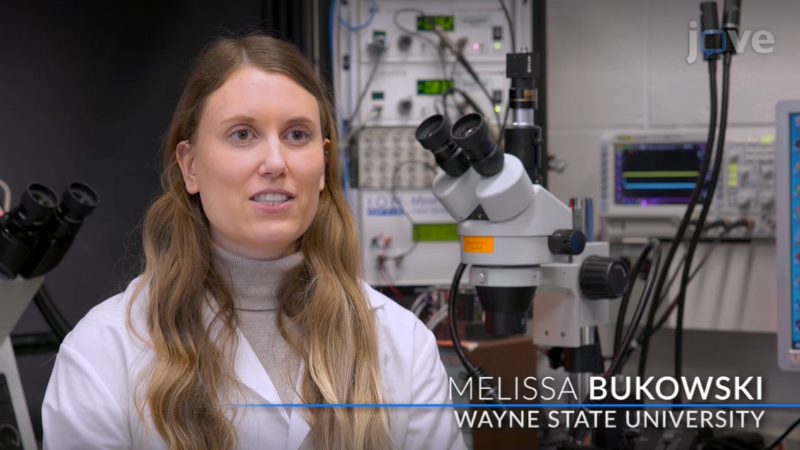In vivo Measurement of Knee Extensor Muscle Function in Mice
Quantification of knee extensor maximal strength is imperative to understand functional adaptations to aging, disease, injury, and rehabilitation. We present a novel method to repeatedly measure in ...
In Vivo Measurement of Hindlimb Dorsiflexor Isometric Torque from Pig
The present protocol describes concise experimental details on the evaluation and interpretation of in vivo torque data obtained via electrical stimulation of the common peroneal nerve in ...
Mechanical Control of Relaxation Using Intact Cardiac Trabeculae
Melissa Bukowski and colleagues describe and demonstrate a method to measure mechanical control of relaxation or the strain dependence of muscle relaxation in rodent cardiac ...
Non-invasive Assessment of Dorsiflexor Muscle Function in Mice
Frederico Gerlinger-Romero and colleaguesdescribe how to conduct repetitive, non-invasive in vivo assessment of the dorsiflexor muscles over time in the same ...
Applications of In Vivo Functional Testing of the Rat Tibialis Anterior for Evaluating Tissue Engineered Skeletal Muscle Repair
We describe an in vivo protocol to measure dorsiflexion of the foot following stimulation of the peroneal nerve and contraction of the anterior crural compartment of the rat ...
in-vivo Canine Muscle Function Assay
We describe a minimally-invasive and painless method to measure canine hind limb muscle strength and muscle response to repeated eccentric ...
Force Measurement During Contraction to Assess Muscle Function in Zebrafish Larvae
Force measurements can be used to demonstrate changes in muscle function due to development, injury, disease, treatment or chemical toxicity. In this video, we demonstrate a method to measure force ...
Evaluation of Muscle Function of the Extensor Digitorum Longus Muscle ex vivo and Tibialis Anterior Muscle in situ in Mice
Changes in limb muscle contractile and passive mechanical properties are important biomarkers for muscle diseases. This manuscript describes physiological assays to measure these properties in the ...
Isometric and Eccentric Force Generation Assessment of Skeletal Muscles Isolated from Murine Models of Muscular Dystrophies
Muscle function measurements contribute to the evaluation of potential therapeutics for muscle pathology, as well as to the determination of mechanisms underlying physiology of this tissue. We will ...
An in-vitro Adult Mouse Muscle-nerve Preparation for Studying the Firing Properties of Muscle Afferents
Muscle sensory neurons are involved in proprioceptor signaling and also report on metabolic state and injury related events. We describe an adult mouse in-vitro muscle-nerve preparation for ...
Measurement of Maximum Isometric Force Generated by Permeabilized Skeletal Muscle Fibers
Analysis of the contractile properties of chemically skinned, or permeabilized, skeletal muscle fibers offers a powerful means by which to assess muscle function at the level of the single muscle ...











